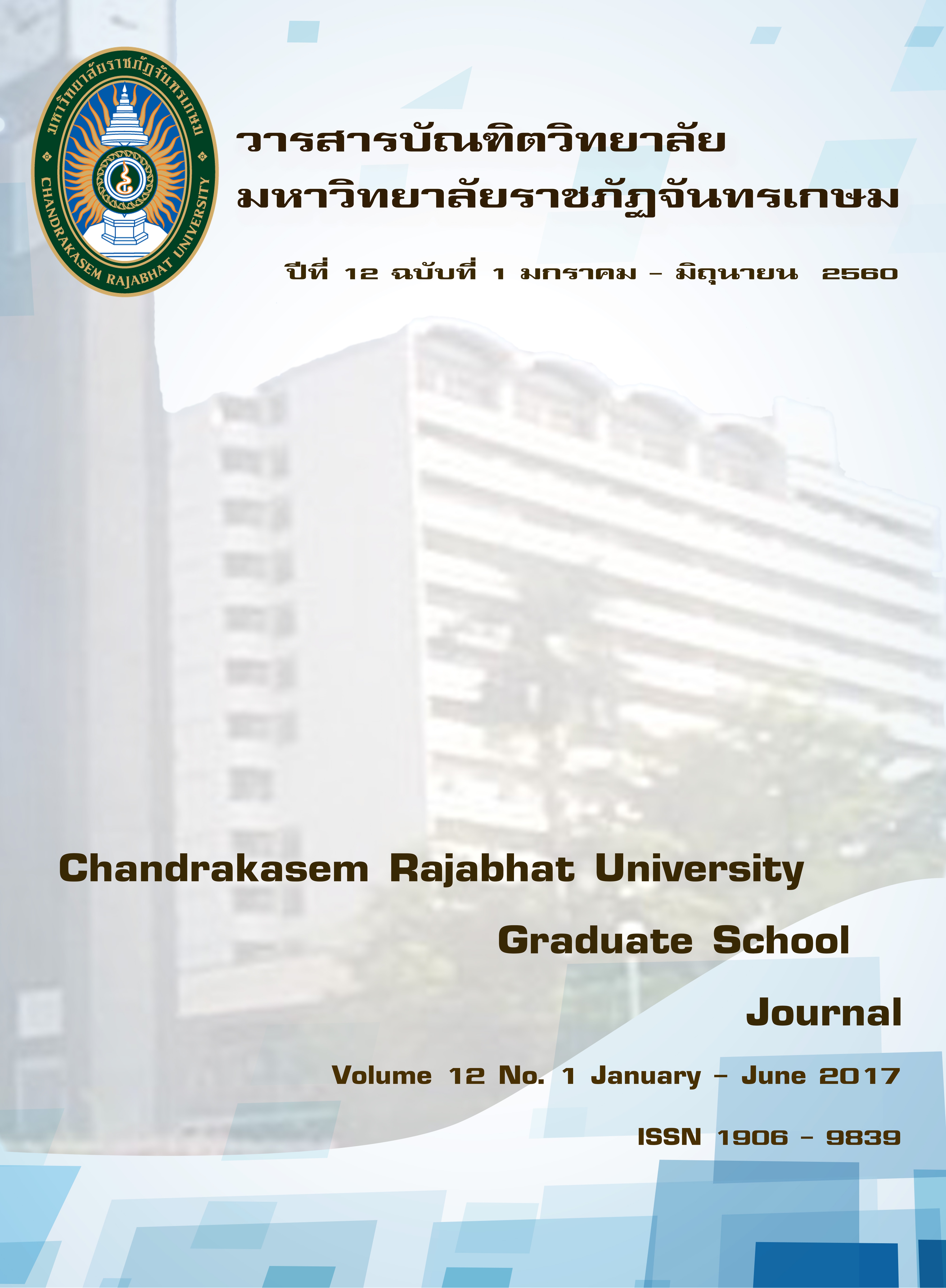รูปแบบจำลองธุรกิจเพื่อการแข่งขันของระบบโลจิสติกส์ต้นน้ำในอุตสาหกรรมปาล์มน้ำมันของประเทศไทย
Main Article Content
บทคัดย่อ
บทความนี้มีวัตถุประสงค์ 1) เพื่อศึกษาปัญหาระบบโลจิสติกส์ต้นน้ำในอุตสาหกรรมปาล์มน้ำมันของประเทศไทย และ 2) เพื่อศึกษารูปแบบจ้าลองธุรกิจเพื่อการแข่งขันของระบบโลจิสติกส์ต้นน้ำ อุตสาหกรรมปาล์มน้ำมันของประเทศไทย วิธีวิจัยเป็นการวิจัยเชิงคุณภาพ โดยด้าเนินการเก็บข้อมูลด้วยวิธีการสัมภาษณ์เชิงลึกกับกลุ่มผู้ให้ข้อมูลส้าคัญจ้านวน 2 กลุ่ม คือ กลุ่ม 1 ผู้เชี่ยวชาญ จ้านวน 6 คน และกลุ่ม 2 ผู้มีส่วนได้ส่วนเสีย จ้านวน 29 คน การวิเคราะห์ข้อมูล ใช้เทคนิคการวิเคราะห์เชิงเนื้อหา ผลการสัมภาษณ์เชิงลึก ผู้ให้ข้อมูลส้าคัญกลุ่ม 1 พบว่า ระบบโลจิสติกส์ต้นน้ำในอุตสาหกรรมปาล์มน้ำมันของประเทศไทย ขาดประสิทธิภาพในด้านการจัดการเก็บเกี่ยวผลปาล์ม และการเคลื่อนย้ายผลปาล์มมายังโรงงานสกัดน้ำมันปาล์มดิ และขาดความร่วมมือที่ดีในการด้าเนินการร่วมกันระหว่างเกษตรกรและโรงงานสกัดน้ำมันปาล์มดิบ ผู้วิจยได้ประยุกต์ใช้รูปจ้าลองธุรกิจตามนิยามของ Johnson et. al. (2008) มาใช้ในการพัฒนารูปแบบธุรกิจโลจิสติกส์ต้นน้ำ ประกอบด้วย 1) ข้อเสนอคุณค่า คือ ผลปาล์มน้ำมันสดที่เพียงพอ และสุกตามมาตราฐานของโรงงานสกัดน้ำมันปาล์มดิบ 2) ทรัพยากรหลัก คือ สวนปาล์มน้ำมันลานเท โรงงานสกัดน้ำมันปาล์มดิบ ที่ต้องการจัดการที่เหมาะสม 3) กระบวนการหลัก คือ การปฎิบัติในการเก็บเกี่ยว และการขนส่งผลผลิตปาล์มน้ำมัน และ 4) สูตรก้าไร คือ การบริหารผลก้าไรในรูปแบบจ้าลองธุรกิจของโลจิสติกส์ต้นน้ำในอุตสาหกรรมปาล์มน้ำมัน ผลการสัมภาษณ์เชิงลึก ผู้ให้ข้อมูลส้าคัญกลุ่ม 2 ท้าให้ได้แบบจ้าลองธุรกิจโลจิสติกส์ต้นน้ำของจังหวัดกระบี่ เพื่อใช้ในการพัฒนารูปแบบจ้าลองธุรกิจของระบบโลจิสติกส์ต้นน้ำ อุตสาหกรรมปาล์มน้ำมันของประเทศไทย โดยที่รูปแบบธุรกิจโลจิสติกส์ต้นน้ำที่พัฒนา จะให้สูตรก้าไร เป็นองค์ประกอบที่มีความส้าคัญเป็นอันดับแรก ดังนั้นแบบจ้าลองธุรกิจนี้แสดงให้เห็นถึงการเชื่อมโยงห่วงโซ่อุปทานในระบบให้เกิดความสมดุลในแง่อุปสงค์และอุปทาน การใช้กลยุทธ์ผสมผสานการจัดการทรัพยากรหลักและกระบวนการหลักร่วมกัน จะท้าให้เกิดการพัฒนาการส่งมอบผลปาล์มที่มีคุณภาพแก่โรงงานสกัดน้ำมันปาล์มดิบได้ดียิ่งขึ้น
Article Details
เอกสารอ้างอิง
กรุงเทพฯ : บริษัท อินโนกราฟฟิกส์ จ้ากัด.
2. เบญจวรรณ คงขน. (2548). กำรวิเคราะห์การประหยัดต่อขนาดและการประหยัด จากการขยายขอบเขตการผลิตของ เกษตรทฤษฎีใหม่ในจังหวัดอุดรธานี.
3. ปิติพีร์ รวมเมฆ. (2557). รูปแบบและปัจจัย แห่งความสำเร็จของ Contract Farming ในประเทศไทย: กรณีศึกษา Contract Farming สุกร.
4. ปิติพีร์ รวมเมฆ. (14 กันยายน 2553). การกระจายสินค้าแบบลีน. https://www.logisticsdigest.com
5. วิทยา สุหฤทดำรง. (2546). โลจิสติกส์และ การจัดการโซ่อุปทาน. กรุงเทพฯ: ซีเอ็ดยูเคชั่น.
6. ส้านักงานเศรษฐกิจการเกษตร. (2558). ข้อมูลพื้นฐานเศรษฐกิจการเกษตรปี 2557. กรุงเทพฯ : สำนักงานเศรษฐกิจการเกษตร.
7. สำนักงานเศรษฐกิจการเกษตร. (2558). ศูนย์สารสนเทศการเกษตร: เขตเกษตร เศรษฐกิจ. https://www.oae.go.th/
8. Chesbrough, H. (2007). Why companies should have open business models, MIT sloan management review, winter.
9. Johnson, M. W., Christensen, C. M. &Kagermann, H. (2008), “Reinventing your business model”, Harvard Business Review, December 2008.
10. Morris M, Schindehutte M and Alle J. (2005). “The entrepreneur’s business model: toward a unified perspective”. Journal of business Research
11. Osterwalder, A. (2004). The business model ontology – a proposition in a design science approach. Universite de Lausanne.
12. Shafer, S.M., Smith, H.J., & Linder, J. (2005). The power of business models, Business Horizons
13. Sing.et.al. (2013). Application of Lean and JIT Principles in Supply Chain Management.


